Vivarium Stories
2021-02-17
I’ve been keeping vivaria for several years now. My oldest was planted in 2018, to house my newly caught carpenter ant queen. I’ll tell the story about my ants another time, but something happened recently that made me want to share a few photos that show how amazing the power of nature can be.
When I first planted what I call my “Red Cliffs” vivarium, after the reddish-orange rocks and soil I sourced from the old sand pit at my family cottage (and after one of my favourite movies), it was mossy and full of ferns and grasses, all pulled from the cottage forest.

It thrived for a while, filling in with more leaves and moss spreading. I was really happy with how it was going.
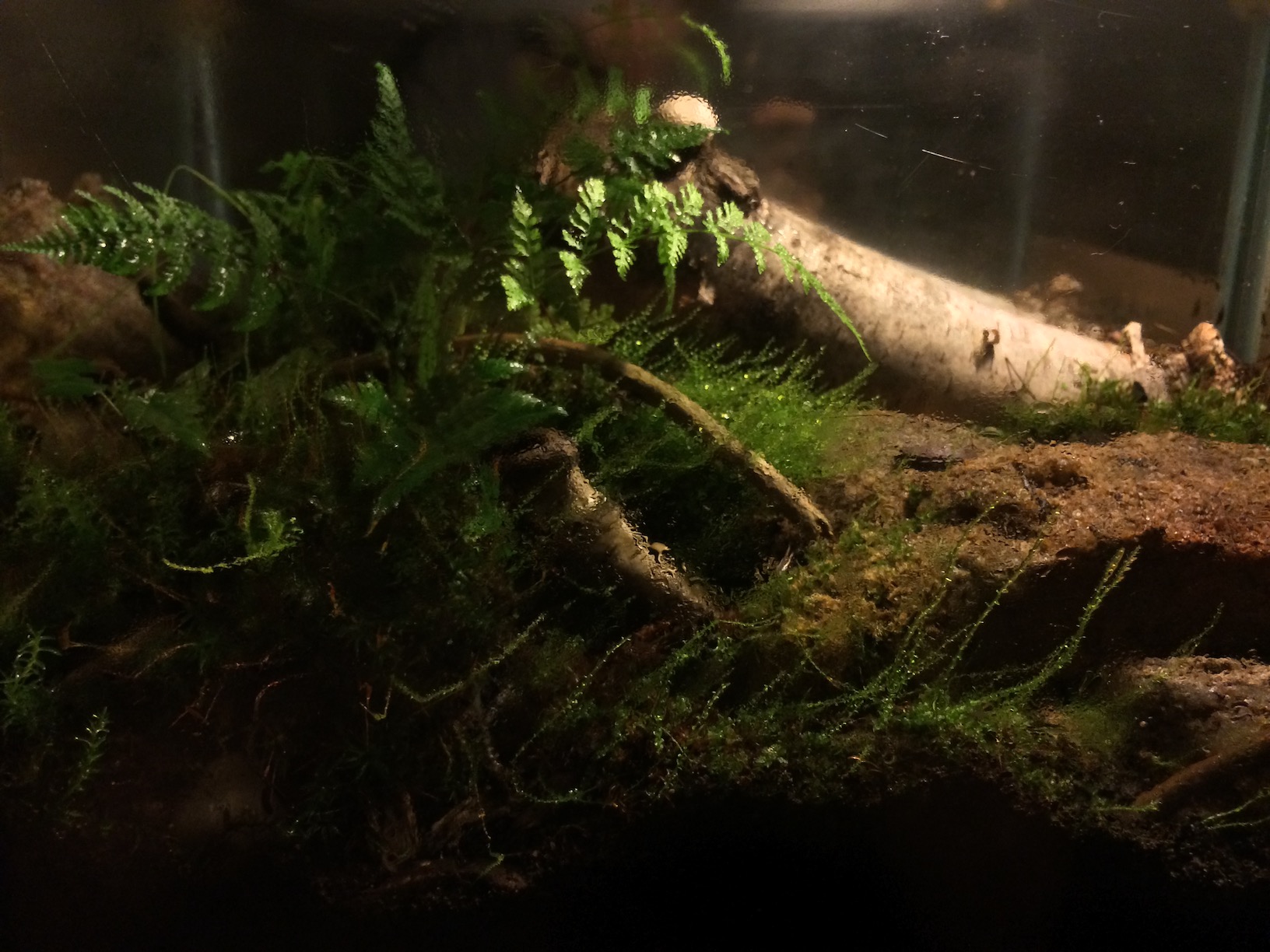
When I moved to my current apartment, there were still some smaller ants in the vivarium that I had accidentally introduced via a small mossy chunk of wood that apparently housed their queen, and they seemed to be growing in number. I became concerned that they’d be able to escape through cracks in the lid that the larger carpenter ant workers I had intended to house would not have been able to fit through. So I bought some caulking, and sealed around the interior of the top of the tank.
What I didn’t realize is that caulking cures by off-gassing a bunch of very noxious fumes, for quite a while. I didn’t want to leave it open lest the ants escape and infest my building, but I didn’t want to seal it and have all that gas accumulate in the tank. I opted to open it for intervals and try to circulate the air while I could keep a close eye on it, then seal it while I went about my day. Unfortunately this was not enough, and the offgassing continued for days, killing off almost all of the plants in the tank.
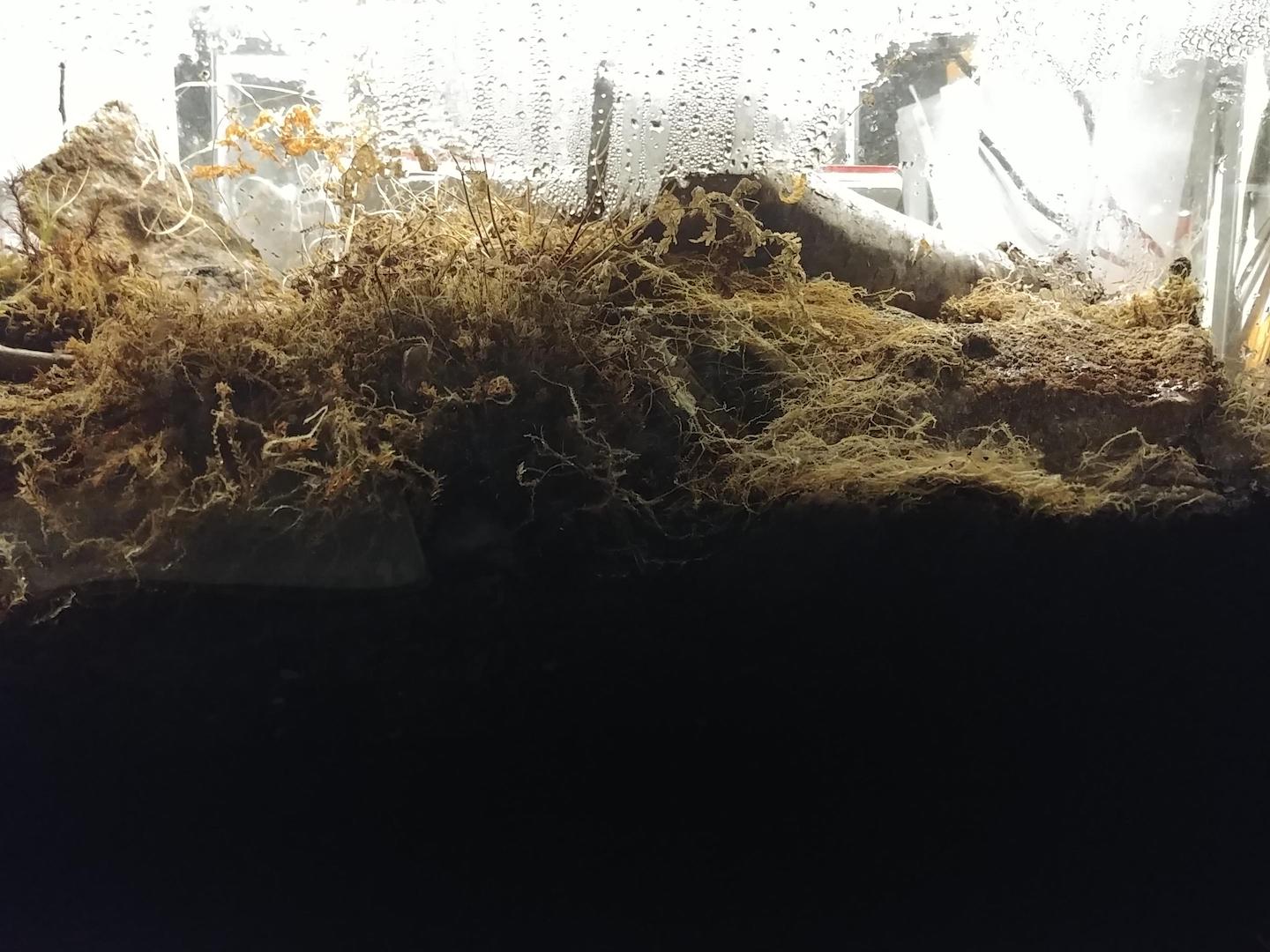
I was devastated that the ecosystem I’d tended for so long had been wiped out by my well-intentioned but poorly executed maintenance. It was very saddening to go from looking at a lush, green chunk of cottage forest every day at my desk to this barren, yellow and brown wasteland. To my surprise and delight, however, the ants and centipedes and some other critters were still making appearances. I assume they were able to burrow into the soil to escape the worst of the poisoning. I thought about replanting it with fresh moss and plants, but I didn’t want to disturb the critters any further, and I was curious what would happen next. There were a few small remnants of slightly green moss that had survived, and I thought they might make a comeback.
One of the reasons I enjoy keeping vivaria so much is the lesson in patience they provide. How much can change just given time. There is a deep satisfaction in watching a patch of moss spread, inch by inch, month by month. And sure enough, my patience was rewarded.
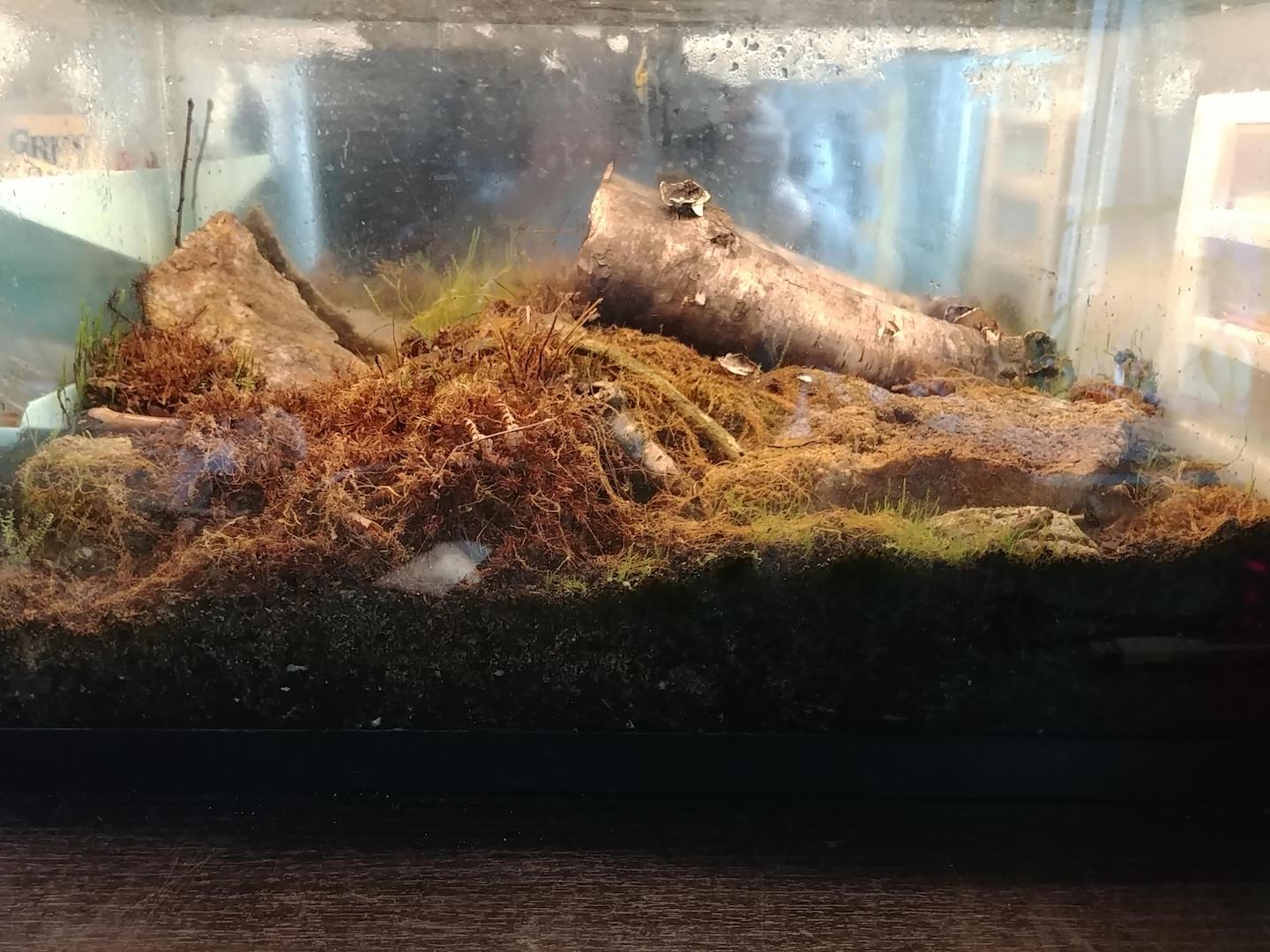
I cut back and removed a lot of the dead plants to make space and allow light to reach whatever remained. Small patches of moss popped up and slowly started to spread. The photo above was taken in June of 2020, nine months after the die-off from the caulking incident. Something I didn’t realize then but have learned from observation is that the areas where the moss held and rebounded from are all spots where centipedes had churned the earth, making their little tunnels and fertilizing it with their “waste”. Nature wastes nothing.
Around this time, my partner bought a bunch of grow lights for her rapidly expanding collection of houseplants. I installed one above the tank, which previously had only a basic LED strip light from Ikea. Fast forward to October of 2020, and here is what it looked like:
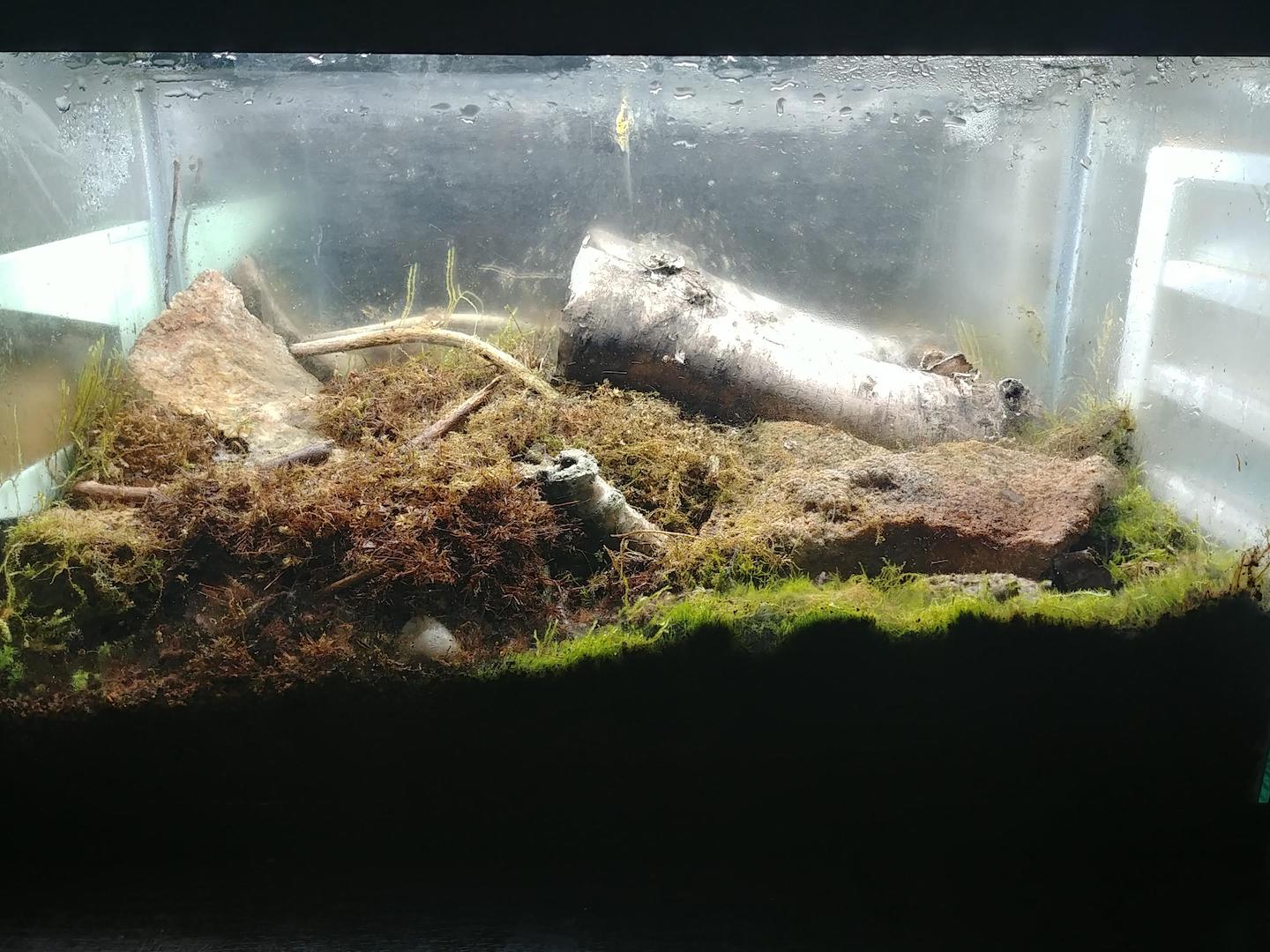
At this time I grew curious as to the actual rate of expansion of the moss, and I decided to make a note of how long it took to reach the white stone in the front middle. It reached it with a single sprout of moss a few weeks ago, and as of yesterday had reached a point where it is starting to envelop the stone.
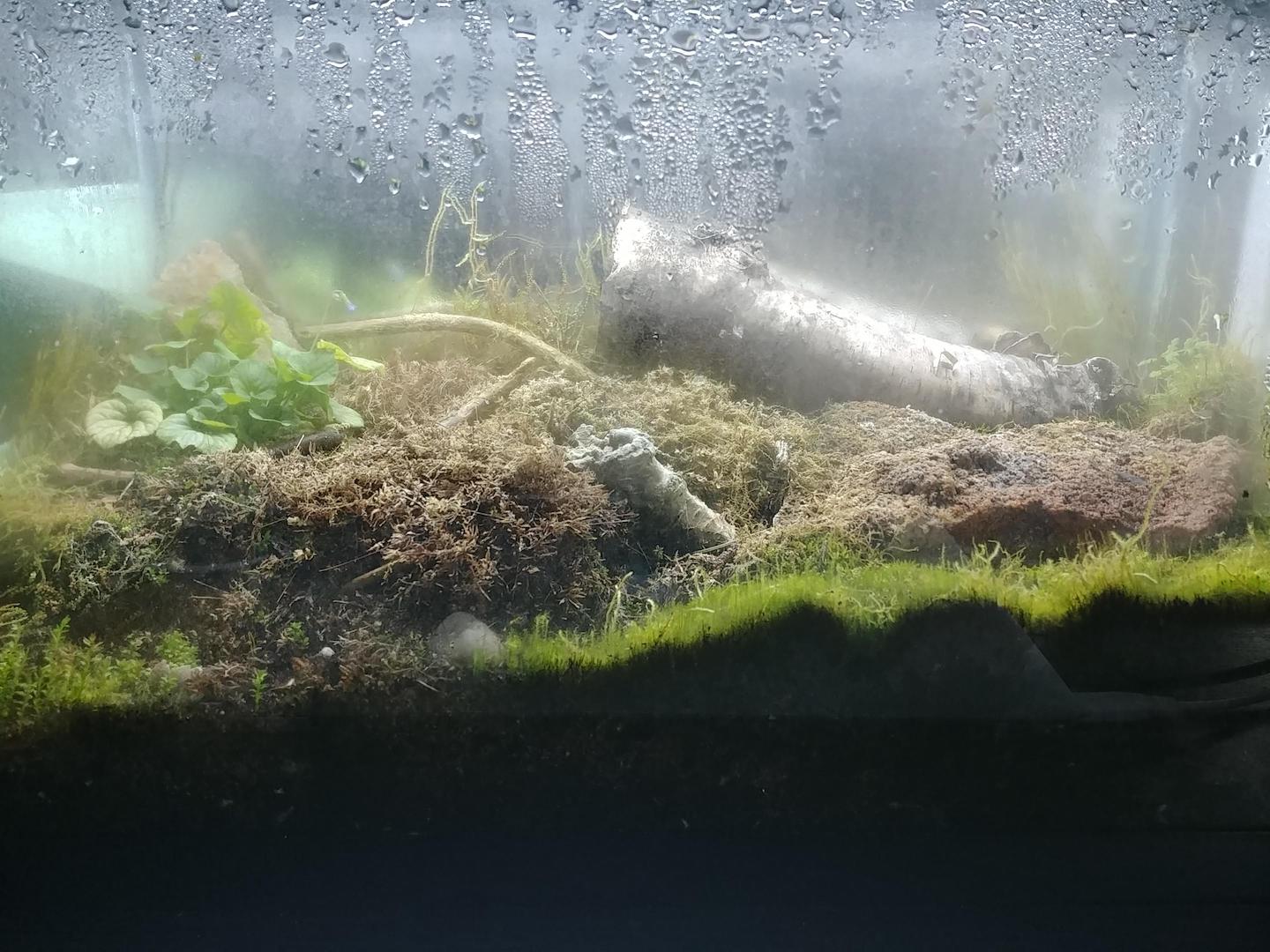
While that moss was slowly propagating, what looked like a simple weed started sprouting in the back left of the tank. A couple broad leaves quickly grew, and grew, sprouting more and more leaves, while in the back right it looks like a fern might be making a comeback. But I was amazed to notice yesterday that a solitary flower had shot up out of nowhere from that plant on the left. It’s a delicate purple wildflower, and a real blessing in the midst of winter.
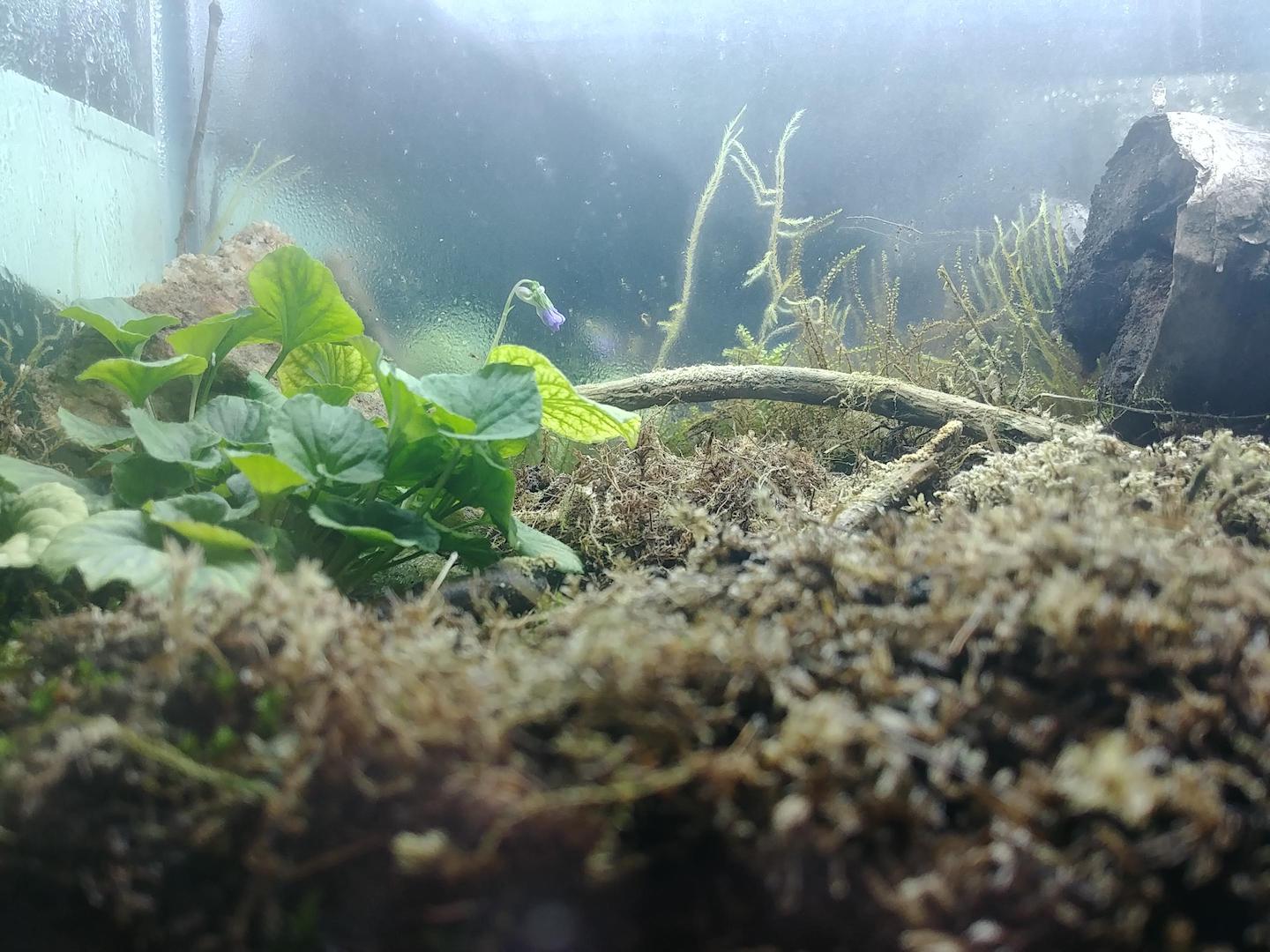
The great thing about these aquarium-tank gardens is how little maintenance they require. I intervene to adjust the water levels every couple months and that’s about it. I can spend hours watching this slice of nature. It calms my soul. It teaches me new things all the time. And what looks like a still, motionless landscape at first glance is actually bustling with life and activity - more on that in my next post!